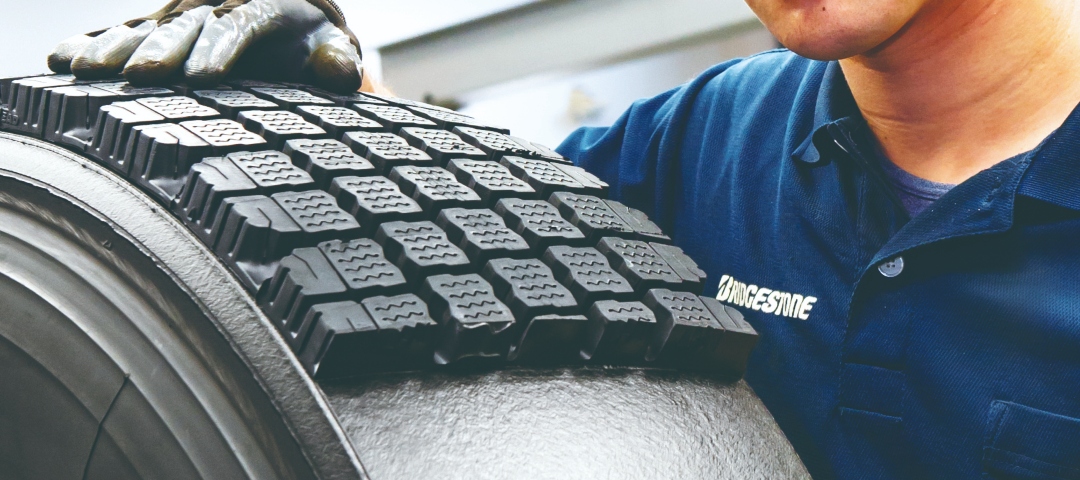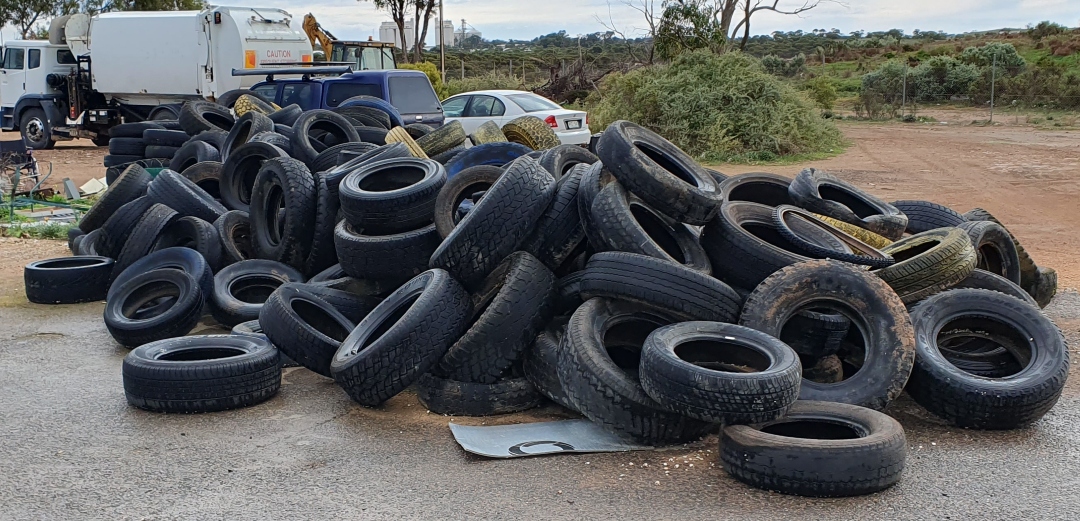
Bridgestone-Bandag: Extending the life of truck tyres through retreading
A case study for using procurement practices to transition to a circular economy.
Bandag, a subsidiary fully owned by Bridgestone Australia, increases the lifespan of truck tyres through tyre retreading. The service reuses essential parts of a used tyre, such as the tyre bead and sidewalls (tyre casing), while replacing only the tyre tread.
The transition
The change involves transport companies retreading truck tyres or buying retreads, instead of single-use tyres. New tyres can contain a lot of embedded energy and resources from tyre manufacture and transport. Tyre composition can also vary greatly and there is little transparency on tyre ingredients, making tyre recycling challenging and costly. There is also limited demand for recovered tyre materials in new tyre products. As a result, most is used in downcycle activities, such as:
- An alternative fuel to fossil fuels (e.g. replacement for coal in a cement kiln).
- A component in road-making products (e.g. crumbed rubber additive in asphalt).
The retread process
The used truck tyre retread process typically involves:
1. Visual Inspection
Trained specialists visually examine used truck tyre casings and identify and mark visible damage, assessing their suitability for retreading.
2. Shearography
Suitable casings are placed in a vacuum and subjected to shearography, a process that uses lasers to detect surface issues not visible to the naked eye. If any problems are found, the casing is rejected.
3. Preparation
Approved casings are inflated to their operational shape and machine-buffed to remove the old tread, making way for a new one. After further inspection and addressing any repairable damage, such as rust, the casing is certified for retreading.
4. New tread application
A new tread is applied to the casing using a bonding agent. This is an automated process, to ensure the tread is both straight and centred on the casing.
5. Curing
The assembled tyre is enclosed in an elastic envelope and cured in a chamber using Bandag’s unique cold-press process at just 99°C to minimise heat damage (compared to the typical hot cure process of more than 104°C). This permanently binds the new tread to the tyre.
6. Final inspection
A final inspection is carried out to ensure quality standards are met. The retreaded truck tyre is then ready for use.
Benefits and outcomes
The benefits of a retreaded truck tyre include:
- Reduced manufacture carbon emissions (up to 51%).
- Conservation of resources (retreading reuses up to 75% of a tyre, saving around 56.5 litres of oil).
- Decreased lifecycle solid waste by up to 69% (compared to purchasing multiple single-use tyres).
- Reduced lifetime tyre cost per km (up to 30%) as retreading extends tyre casing lifespan by up to three times, adding an extra 500,000 km of use.
Returning and retreading also reduce stockpiling of used tyres and the associated risks (e.g. fire), particularly in rural areas and council waste facilities.

Working with suppliers
Lindsay Australia, an integrated transport, logistics, and rural supply company, has partnered with Bridgestone and Bandag since 2012. Bridgestone Tyre Technicians are stationed at their 30 depots to maintain and replace tyres when needed. Used tyre casings are returned to Bandag for processing, and retreads used when viable.
By using over 4,000 Bandag retreaded truck tyres yearly, Lindsay Australia saves:
- 292 tonnes CO2 emissions from tyre manufacturing
- 92 tonnes of solid waste from used tyre disposal.
Lindsay Australia’s Fleet Quality & Efficiency Manager, Nick Lindsay has found that:
“The combination of Bandag retreads and low-emission, fuel-saving Bridgestone Ecopia tyres used in our fleet contributes to our environmental and economic sustainability objectives. The reduction of Scope 1 fuel consumption emissions begins with the purchase of new low rolling resistance tyres, which are then removed from our fleet and retreaded after use. Bandag retreads continue to complement our targets through Scope 3 emission reduction and align with our goal of practising responsible waste management through landfill diversion. The benefits begin right from the purchase of the new tyre through to multiple retreads and reuse.”
Next steps for Bridgestone-Bandag
Retreaded truck tyres currently likely account for less than one-quarter of truck tyre sales in Australia.iii In the past, the sales of retreads and new tyres were nearly equal. As Bridgestone’s global focus is on becoming a sustainable solutions company, it recognises the role that Bandag’s retreaded truck tyres have in the transition to a circular economy. It is committed to growing the market for retreads in Australia. Bandag retreads also align with Bridgestone's objectives, while delivering both societal and economic value to customers.
Conclusion
Retreaded truck tyres offer transport organisations environmental and economic benefits compared to new tyres. The Australian Government is pushing for a circular economy. As a result, Bandag retreads are now more relevant than ever before. They provide the Australian transport sector with a premium and sustainable solution for truck tyres.
About this case study
This case study was prepared by Rawtec for Green Industries SA. It is part of a series of case studies aimed at empowering businesses and organisations to make changes to their procurement practices to transition to a circular economy.
Acknowledgements
We would like to express our gratitude to Bridgestone, Bandag, and Lindsay Australia, for sharing their insights and data, which formed the basis of this case study.
[i] Bandag 2018, ‘Retread Report: 10 Reasons Retreads May Be Better Than New tyres’, link.
[ii] Figures calculated and provided by Bridgestone Australia.




